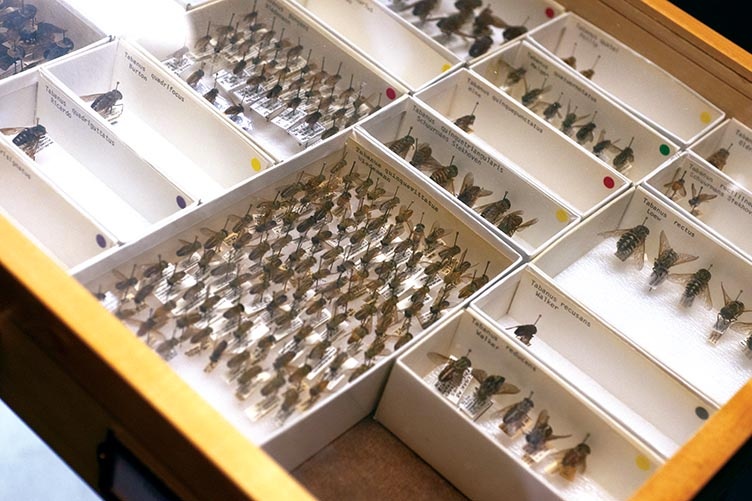
One of UNH’s most vital libraries isn’t stocked with books and periodicals. Instead, it’s home to wings and antennae, pincers and stingers. And now, a $4.3 million grant from the National Science Foundation (NSF) will help make that “library” — along with those of 26 other research institutions — accessible to the research community and the general public.
Istvan Miko, an entomologist and research scientist in the College of Life Sciences and Agriculture, compares the 700,000 specimens in UNH’s collection of insects and other arthropods to “books in the library of life.” In 1984, the specimen count was around 300,000. Today, it’s the largest collection among all state universities in New England. And yet, as with other “libraries” around the country, its benefits have not to this point been fully realized. Researchers at other institutions haven’t had full access; interested citizen scientists can view only about 2 1/2 percent of the specimens; the information these specimens can provide about the spread of disease-carrying pathogens hasn’t been accurately mapped.
The NSF’s Terrestrial Parasite Tracker project will mobilize data and images from more than 1.3 million arthropod specimens from research collections across the United States, including UNH’s. That information will be combined with vector and disease-monitoring data from state and federal agencies, creating a portal for researchers to track past parasite distributions and their interactions with hosts to predict future changes. Purdue University is leading the effort; UNH’s portion of the grant will be used to create high-quality 3D images of its specimens and for outreach and education about how disease vectors carry and transmit pathogens.
“Having this data available will help us understand health in humans and ecosystems as well as climate change,” says Miko, who manages UNH’s collection. “If we understand the vectors of certain diseases, we can come up with models and predict what’s going to happen 20, 30 years from now.”
Making access to specimens more readily available to a broader audience is key, Miko says. At UNH, currently only about 17,000 species can be viewed online. Thanks to the NSF and the Terrestrial Parasite Tracker project, he estimates that number will increase to 250,000 by 2023.
-
Written By:
Jody Record ’95 | Communications and Public Affairs | jody.record@unh.edu



















































